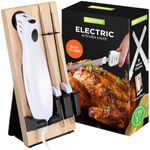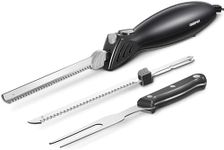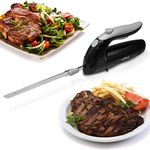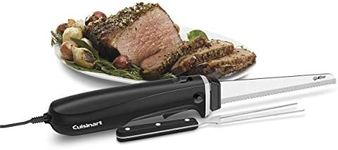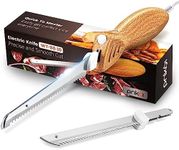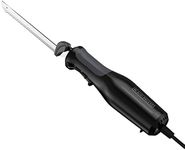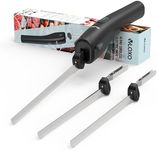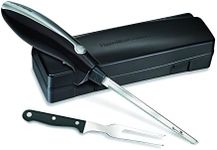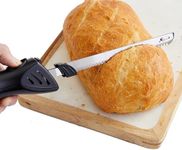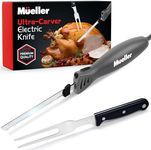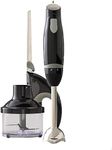Buying Guide for the Best Electric Knives
Choosing the right electric knife can make food preparation much easier, especially if you often slice bread, meats, or other foods that require precision. The key to finding the best electric knife for you is to consider how you plan to use it, how often, and what features will make your tasks simpler and safer. Understanding the main specifications will help you match a knife to your needs, ensuring you get a tool that is comfortable, efficient, and reliable.Blade MaterialBlade material refers to what the cutting blades are made from, most commonly stainless steel. This is important because it affects the knife’s sharpness, durability, and resistance to rust. Stainless steel blades are popular because they stay sharp longer and are easy to clean. Some knives may have coated or specialty blades for specific tasks. If you plan to use your electric knife for a variety of foods, look for high-quality stainless steel. If you only need it for soft foods, you might not need the most premium material.
Blade LengthBlade length is the measurement from the handle to the tip of the blade. This matters because longer blades can handle larger items like roasts or big loaves of bread, while shorter blades are easier to control for smaller or more delicate tasks. Blades typically range from about 7 to 10 inches. If you mostly cut large items, choose a longer blade. For everyday kitchen tasks or smaller foods, a shorter blade may be more comfortable and precise.
Power SourceElectric knives can be powered by a cord plugged into an outlet or by rechargeable batteries. Corded models usually offer more consistent power and are good for heavy or frequent use, but you need to be near an outlet. Cordless models offer more flexibility and portability, which is great for outdoor use or moving around the kitchen, but they need to be recharged and may not be as powerful. Think about where and how you’ll use the knife to decide which power source fits your lifestyle.
Handle Design and ComfortThe handle design affects how comfortable and safe the knife is to use. Look for ergonomic handles that fit well in your hand and have non-slip grips, especially if you’ll be using the knife for extended periods. Some handles are designed for left- or right-handed users, so consider your dominant hand. If you have smaller hands or grip issues, a lighter, slimmer handle may be easier to control.
Safety FeaturesSafety features can include blade locks, safety switches, and finger guards. These are important to prevent accidental starts or injuries while using or cleaning the knife. If you have children in the home or are concerned about safety, look for models with multiple safety features. If you’re confident in your knife skills, you may prioritize ease of use over extra safety mechanisms.
Ease of CleaningEase of cleaning refers to how simple it is to wash and maintain the knife. Some electric knives have removable blades that are dishwasher safe, making cleanup quick and easy. Others may require hand washing or more careful maintenance. If you want a low-maintenance tool, look for dishwasher-safe parts. If you don’t mind a little extra care, you can consider models with more complex designs.
Included AccessoriesSome electric knives come with extra blades, storage cases, or carving forks. Accessories can add value and convenience, especially if you plan to use the knife for different foods or want to keep everything organized. If you only need the basics, you might not need extra accessories. If you like having options or plan to use the knife for various tasks, look for sets with useful extras.

